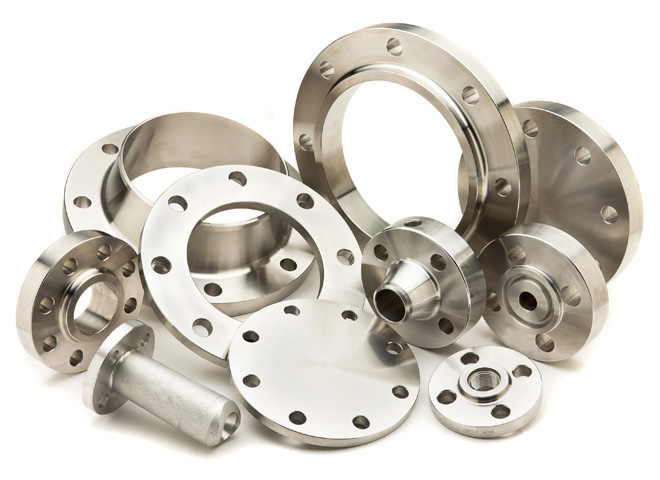Products
Flanges & Nozzles
PRODUCT ID : PI/003/01 Fittings
There are many different flange standards to be found worldwide. To allow easy functionality and inter-changeability, these are designed to have standardised dimensions. Common world standards include ASA/ANSI/ASME (USA), PN/DIN (European), BS10 (British/Australian), and JIS/KS (Japanese/Korean).
In most cases these are not interchangeable (e.g. an ANSI/ASME flange will not mate against a JIS flange). Further, many of the flanges in each standard are divided into "pressure classes", allowing flanges to be capable of taking different pressure ratings. Again these are not generally interchangeable (e.g. an ANSI/ASME 150 will not mate with an ANSI/ASME 300).
These pressure classes also have differing pressure and temperature ratings for different materials. Unique pressure classes for piping can also be developed for a process plant or power generating station; these may be specific to the corporation, engineering procurement and construction (EPC) contractor, or the process plant owner. The ANSI/ASME pressure classes for Flat-Face flanges are 125# and 250#. The classes for Ring-Joint, Tongue & Groove, and Raised-Face flanges are 150#, 300#, (400# - unusual), 600#, 900#, 1500#, and 2500#.
The flange faces are also made to standardized dimensions and are typically "flat face", "raised face", "tongue and groove", or "ring joint" styles, although other obscure styles are possible.
Flange designs are available as "weld neck", "slip-on", "lap joint", "socket weld", "threaded", and also "blind".
Blind Flange - These flanges do not have a bore. It is used to blind off a flange or even a valve.
When used at the end of a pipe or fitting, it provides an easy to open access for further extension
of the pipe. The blind flange and its bolts are stressed more than any other flange.
Lap Joint Flange - This flange is used with a lap joint stub end fitting. It is similar to a slip-on
flange, but with two differences. The radius and the flat face, both allow the flange to secure
against the stub end fitting. This is useful where alignment of bolt holes is difficult, such as with
spools to be attached to flanged nozzles of vessels. A lap joint is used in low pressure
applications and not suitable where high external of heavy loads are present.
Slip-on Flange - Slip-on flanges are designed to slip over the outside of pipe, long-tangent
elbows, reducers, and swages. The flange has poor resistance to shock and vibration. It is easier to align than welding neck flange. This flange is ideal for low pressure applications since the
strength when under internal pressure is about one third that of a weld neck flange.
Socket Flange - This is similar to a slip-on flange, except they have a bored and counter bore.
The counter bore allows the pipe to fit into the socket/counter bore. The bore of the flange is the
same diameter as the inside of the pipe. These flanges were first designed for small diameter,
high pressure pipe.
Threaded Flange - It is similar to a slip-on Flange, but has internal threads. It is normally used
for low pressure and not used where temperature or stress is very high.
Weld Neck Flange - This flange comes in two types, regular and long. The hub of the weld neck
is designed to reduce the stress at the base of the flange. Regular weld neck flanges are used
with buttweld fittings and long weld neck flanges are usually used with equipment and vessel
nozzles. A long weld neck flange is rarely used with pipe. Both types of flanges are bored to
match the inside diameter of the pipe or fitting to which it will be welded to. They are suitable
where high pressure, extreme temperatures, shear impact and vibratory stresses apply.
Ring Joint Facing Flange - Also known as RTJ Flanges. These are used for a leak-proof
connection in high pressure applications. The flange has a hexagonal groove sealing surface and
is fitted with a ring that is compressed in a groove.


